|
|
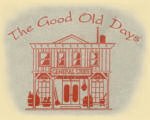 |
Clark County Press, Neillsville, WI January 25, 1995, Page 24 Transcribed by Dolores (Mohr) Kenyon. Index of "Oldies" Articles
|
|
|
 |
Clark County Press, Neillsville, WI January 25, 1995, Page 24 Transcribed by Dolores (Mohr) Kenyon. Index of "Oldies" Articles
|
Good Old Days
By Dee Zimmerman
The township of Mayville, Clark County, was created by an act of the legislature in the year 1873, from which, that time until 1889, it consisted of two townships to be known as Hoard and Mayville. In 1889 the Town of Hoard was created out of the western portion of Mayville Township.
It was not settled to any great extent until the Wisconsin Central Railway built their line of road through the eastern part of the town. For a few years after that the settlement was confined to the eastern part of the town along the line of the railroad, at and near where the village of Dorchester now stands. In 1880, the same rail company built their line of road west through the southern part of the township and across the northern end of the county, to become the main line between Chicago and St. Paul, forming a junction in the southeastern corner of Mayville, which was named Abbotsford.
The first settlers arrived finding large bodies of timber covering the land. The timber consisted of a variety of hardwoods and pine. As was true with other timberlands, lumbering was the primary industry in the beginning. The land had to be cleared before farming could be started. There were large saw mills in the township, one at Curtiss and one at Dorchester, and other sites for the manufacturing of timber into lumber, staves, etc.
The railway lines provided excellent shipping facilities for lumbering products. The main line of the Central ran through the southern part of the town. The eastern line ran to Ashland and other Lake Superior points.
On the Ashland branch rail line, in the northeastern part of the township, the village of Dorchester was developed. Starting in the midst of dense forest, timber was cut to be processed at the village’s saw mill. As the timber disappeared, small farms sprang up. The year of 1890 recorded several businesses in Dorchester, such as: a drug store, hardware store, three general stores, meat market, photograph gallery, grocery store, other mercantile shops, two blacksmith shops, some small factories, two hotels, boarding houses, a public hall, bank and insurance agency of E. H. Winchester, a church and school building.
The population of Dorchester was about 500 in 1890.
Abbotsford Junction, later to be known only as Abbotsford, was called a railroad town at its beginning in 1880. A large number of freight trains passed in and out of the junction everyday. A large depot and railroad eating house stood along the junction of the roads. Circa 1887, the facility was destroyed by fire and a large new depot was built in its place. A large hotel was established across the track from the depot, conveniently located for the railway travelers. That town, too, was carved out of the timberland.
The village of Curtiss was on the town-line of Hoard and Mayville. The large mills of A. D. Bass were located at Curtiss. A large number of men were employed at the saw mill and an immense quantity of lumber was manufactured and shipped each year. There were several stores, a hotel, two or three blacksmith shops and other places of business.
A. N. Virch, who ran a large general store, was also the village postmaster in 1890.
The area’s first agriculture product, to be shipped out on railway, was hay during the winter months.
The 1890s in Mayville was also the time of wagon roads being constructed, new school districts were being formed and new school houses were being built, congregations sprang into existence with places of worship being developed.
Population growth for the townships (Hoard & Mayville) was as follows: 1875 was 487; 1880 was 1,249; 1885 was 1,517; 1890 was 1,750.
1890 Mayville town officers were, H. J. Collier, chairman; Oluf Thompson, Clerk; R. E. Schoenemann, treasurer and John F. Dahlberg, assessor.
The township of Colby is located on the southern border of the Town of Mayville. Within the township is the city by the same name, Colby. The city is divided by the Clark-Marathon County line with U. S. Hwy 13 as visual marker. Formerly the Marathon County half was called Hull which created a lack of harmony in its early ears. Eventually, the village organization resolved the problems and moved forward in its unified efforts. In the early logging days, of 1873, its locality was advantageous in being near the Big Eau Pleine River, a tributary to the Wisconsin River and was a station on the old Wisconsin Central railway, later to be Soo Line, a prominent place due to its early development.
Colby was named after Gardner Colby of Boston, representing the Colby-Philips Construction Company who built the rail-road for Wisconsin Central Company, of which his son, Charles L. Colby, was president.
Another mark of renown is the Colby cheese, a variety of cheese first produced by Steinwand at a Colby cheese factory. The Colby cheese is still a popular variety savored worldwide.
An electric and water plan was put into operation as of 1903, with an investment of $35,000 by the City of Colby. By then, they had a public library, also.
Uncle Joe Shafer came to Colby in 1878 and with is brother started a newspaper. He attempted starting a new county with parts of Clark, Marathon and Taylor counties. The movement encountered a clash of differences which subsided with Shafers starting the Colby Phonograph newspaper, a business that was run by the Shafer family for many years, an award winning publication during its existence.
The 1995 (1895?) city officers were: James E. Lyons, mayor; John Pribnow, treasurer; R. G. Salter, clerk; Joseph Frane, assessor; H. Reeves, H. A. Krepsky, E. D. Loos, and Ben Riplinger, aldermen; H. L. Blanchard, postmaster.
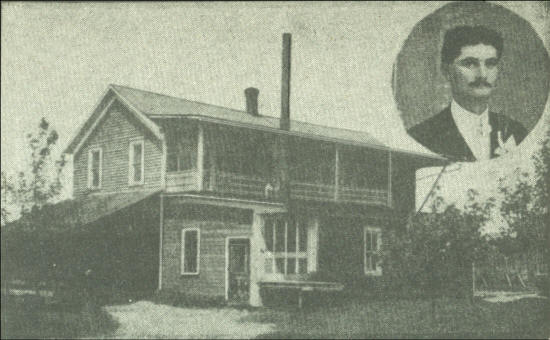 |
A champion cheese of the world originated in a small factory 1 ˝ miles southwest of Colby and bears the city/township’s name “Colby.” The mild, tasty cheese is a favorite of most everyone. It is fitting that it should have originated in the heart of the dairyland.
Ambrose Steinwand built the small cheese factory in 1882 making about 125 pounds of cheese per day and operated only seasonally, seven months out of the year.
In 1885, Joseph Steinwand, Ambrose’s son, developed the first Colby cheese. The factory was owned by the Steinwand family for several years.
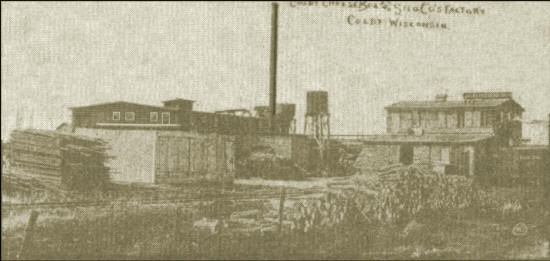 |
The Colby Box & Silo’s factory was brought about through an idea formed and discussed by the village council in 1896. Cigar and cheese boxes were made from the area’s available timber.
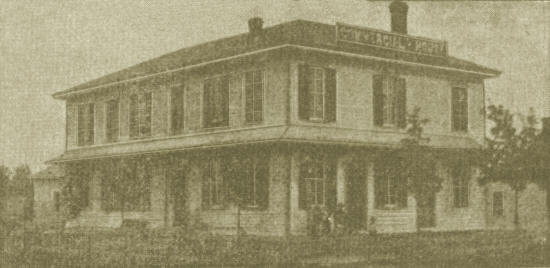 |
N. J. White Hotel in Colby was on the line of the Wisconsin Central Railroad. White came to Clark County after serving in the war from 1861 to 1865. He had been in the lumbering business also.
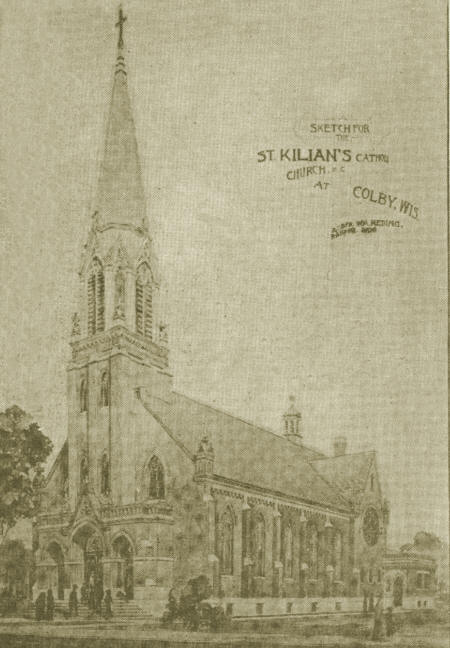 |
The Catholic congregation, of Colby, was first organized in 1877 with Rev. July as its priest. A school building was used for services. In 1885, plans began to develop in building a new facility and St. Killian’s Catholic Church was completed in 1889. Later, the congregation changed the name to St. Mary’s.
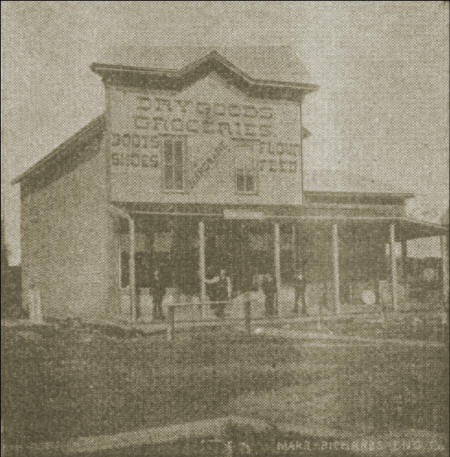 |
L. R. Roder came to Clark County in 1881. Soon after his arrival, he started a general store in Abbotsford which burned in 1886. Immediately he replaced it with a larger new building for business.
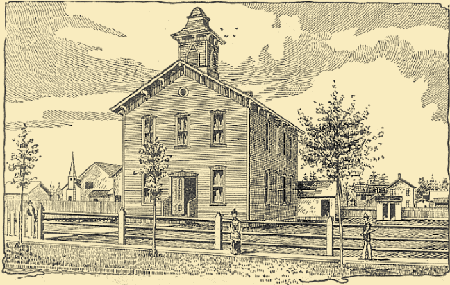 |
The Dorchester Graded School consisting of three departments was located on the village’s north eastern side. Built in the 1880s, the 1890 school board was represented by E. H. Winchester, August H
|
© Every submission is protected by the Digital Millennium Copyright Act of 1998.
Show your appreciation of this freely provided information by not copying it to any other site without our permission.
Become a Clark County History Buff
|
|
A site created and
maintained by the Clark County History Buffs
Webmasters: Leon Konieczny, Tanya Paschke, Janet & Stan Schwarze, James W. Sternitzky,
|